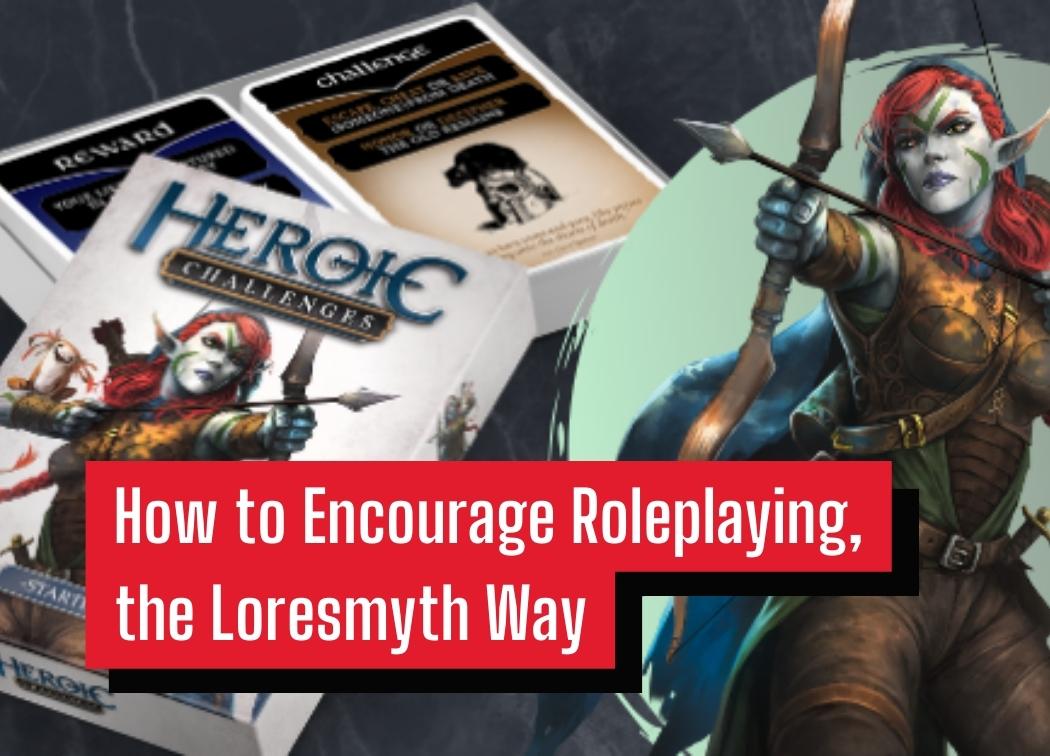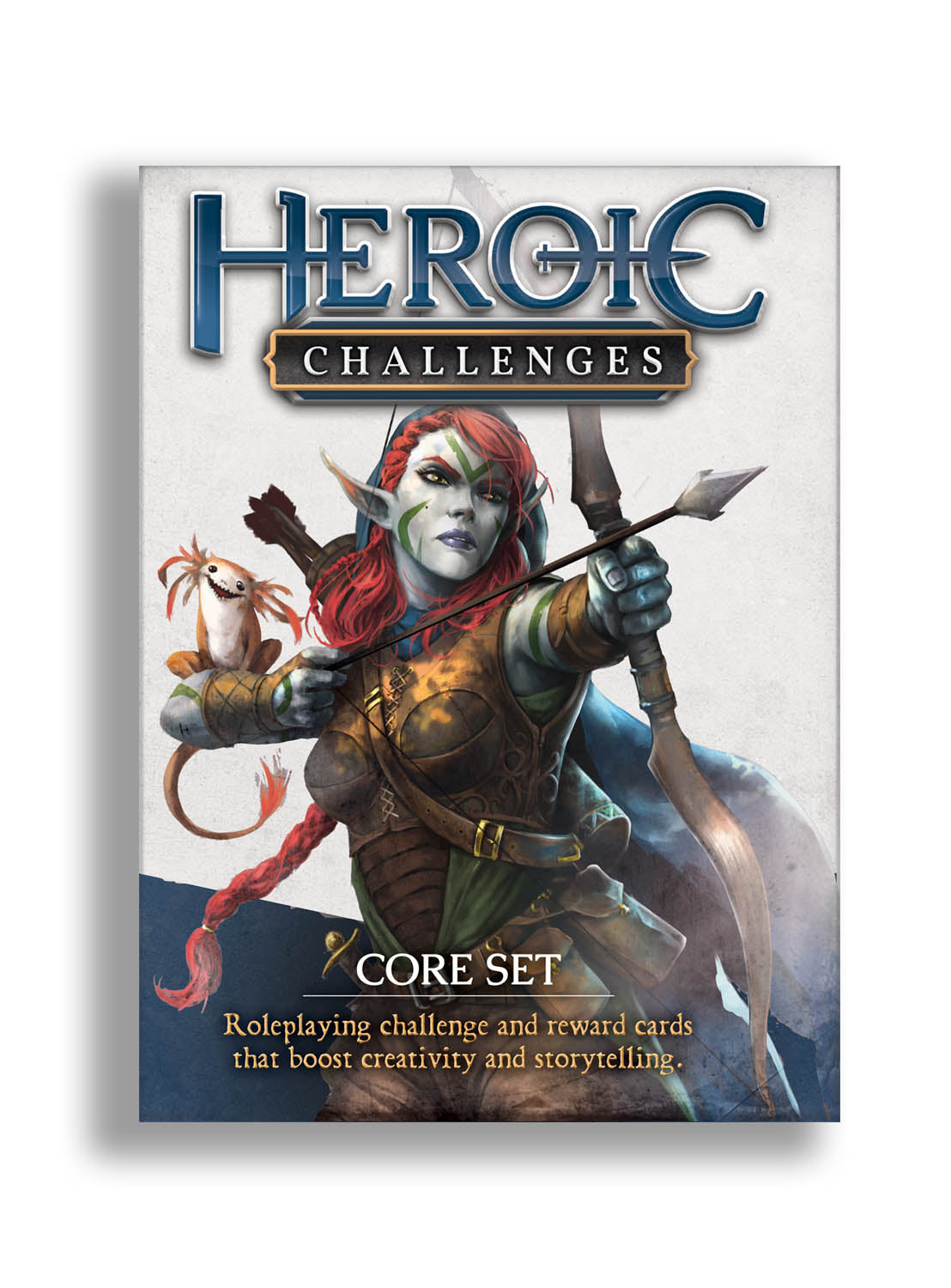How to Encourage Roleplaying, the Loresmyth Way

Hi all! Today’s guest article was written by Chris Mahon and Chris van der Linden from Loresymth. Loresmyth is an RPG publishing company with a variety of products such as worldbuilding decks, adventure modules, and beautiful battlemap & token packs. Be sure to follow them on Twitter and like them on Facebook!
Hey all! This is Chris “Mono” Mahon and Chris van der Linden from Loresmyth! Today, we’re gonna talk to you about the “R” in “tabletop RPGs.”
Roleplaying is one of the biggest things that tabletop players struggle with (apart from figuring out how Sorcery Points work in 5e). New players may be shy or unsure how to get into character, and experienced players may find themselves doing what’s most efficient game-wise, rather than what’s most in-character.
And let’s be honest here–as a GM, it’s tough enough to keep adventures on track without policing roleplaying. Here’s the secret, though: encouraging roleplaying doesn’t mean building a dedicated 15-minute block into each of your sessions where players talk at NPCs.
Instead, it’s about being flexible and attentive enough to know when to inject some roleplaying into a session. Here’s some advice on how to do it!

EMBRACING THE BLANK SPACES
For Chris van der Linden, Loresmyth’s founder, changing the way he approached prepping for games ended up changing how he approached roleplaying, too.
“Typically, in my early days, I was always one that wanted to prepare very deeply. I wanted to fully master the story and all venues a player could take.
“Later, when I got into working life, I started using the ‘lazy GM’ method, with Trello and sticky notes, mapping out the most important beats, and letting the game go how the players were pushing me, sort of like a push-and-pull.”
Being less rigid about setting up adventures meant there was more opportunity for Chris to shape games according to his players’ desires and interests:
“I liked that latter version much more because I had to actively listen more, and keep track of their motivations and goals more, and weave that into the story.”
Planning out the big beats of a session and having blank spaces in between not only gives your space for players to get into roleplaying scenarios but gives you, as the GM, the chance to tailor roleplaying opportunities to what’s going on in the party right now.
Here’s an example:
Scenario: The party is on a quest to track down the leader of a crime syndicate, and the players controlling Jynzara the Tiefling Warlock and Sassafraz the Fighter are clearly excited about diving into the criminal underworld. The party only has to interrogate a member of the syndicate to find the leader, but you haven’t decided how they’ll find a syndicate member yet.
Solution: Lead the party to a bar where a barkeep refuses service to Jynzara because she’s a Tiefling. Give Sassafraz a chance to stand up for her, then introduce a Half-Elf criminal to back them up. The Half-Elf explains that he’s been discriminated against too and becomes friends with Sassafraz and Jynzara, as well as the party’s guide to finding a syndicate member.
Along the way, he teaches Sassafraz and Jynzara some lessons for surviving as criminals (such as how to set up an ambush) and gives them chances to employ what they learned when they capture a syndicate member.
GETTING SOME EXTRA HELP
Of course, it’s all well and good to encourage GMs to embrace the “blank” spaces in the session and just whip up roleplaying opportunities on the fly, but actually trying to pull that off is tough in practice—and it can feel like writer’s block paired with stage fright if you’re not ready for it.
Chris van der Linden ran into that problem with creating random loot, quest hooks, and other details during his games, so he created the Dungeon Discovery Decks, a modular deck he could use to fill gaps in the game with little to no notice. Now, he’s doing something similar with the Heroic Challenges deck set: the set is made of two decks, one for roleplaying prompts (the “Challenges”) and one for rewards.
At any point in a game session (or even before it starts), the GM can flip out a random challenge (or choose one) and build a roleplaying scenario out of it.
“It’s almost like a safety net—when there’s a certain portion of the game you prepare, there are large chunks of ‘unknown territory”, and you can lean on the cards to fill in those blanks, so you never really get hung up.”
Ideally, your game never screeches to a halt because you can’t think of what happens next. Card decks can help with that, but what makes Heroic Challenges (hopefully) even more useful is that giving a player a Challenge card prompts them to make their own fun and start weaving their own little story, taking the pressure off the GM and giving that player a chance to engage in an aspect of tabletop gaming that often gets neglected.
Best of all, the deck is planned to be flexible:
“The GM can use the deck behind the screen to spark new ideas to weave into the game, or he can give it to the players to give them the power to push or pull the story in a new direction by drawing their own Challenges. I think it’s especially good for new or old players to spark ideas about how to break the mold of roleplaying.”
TAKEAWAYS
- Take advantage of unplanned, blank spaces in your session to set up a roleplaying scenario, either with an NPC or between party members.
- Pay attention to players’ excitement or characters’ motivations to build an interesting scenario that pulls in multiple party members
- Make NPCs someone the players respect—either due to knowledge, power, or wit
- Tie roleplaying scenarios back into the main story if possible, and reward players’ engagement
If you’re interested in checking out the Heroic Challenges set, you can follow the Kickstarter here! The campaign begins on April 7th, 2020.
Good luck, GMs, and may your adventures be mythic!
